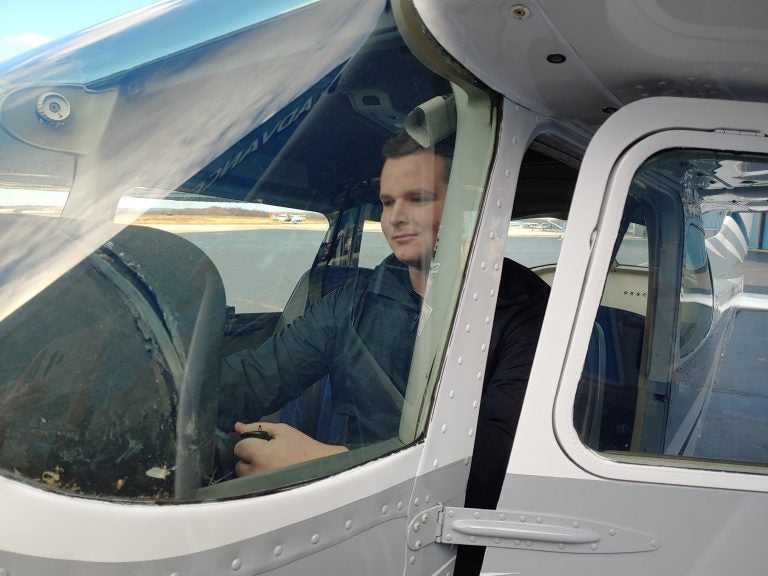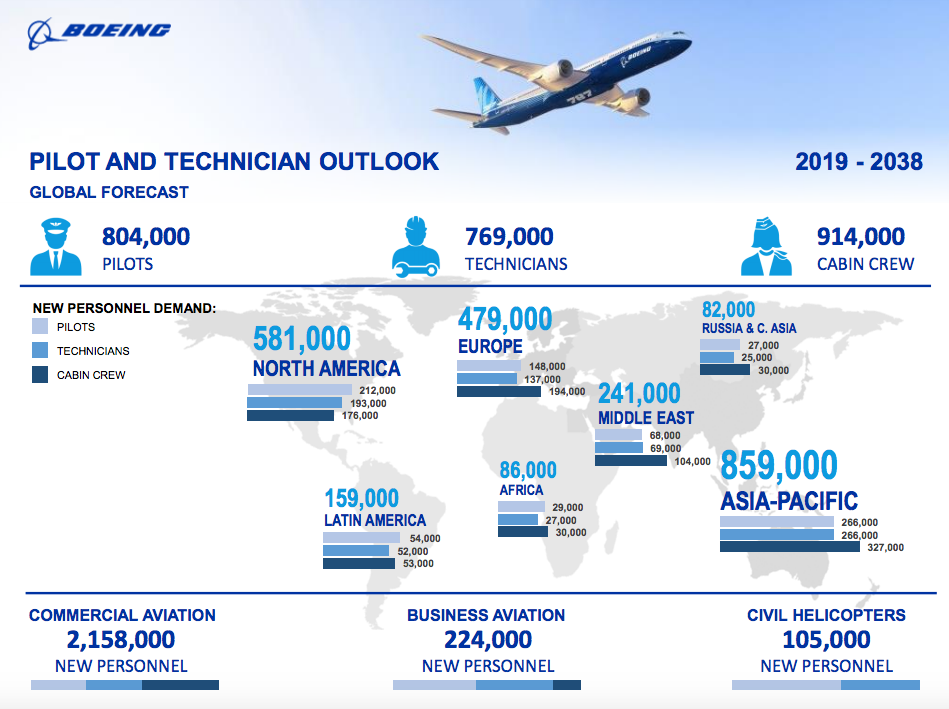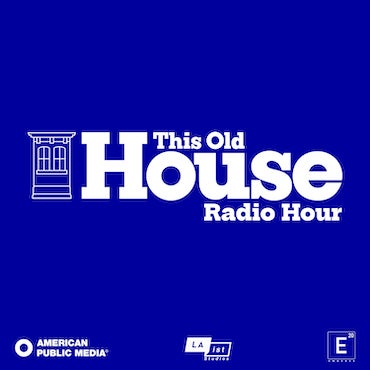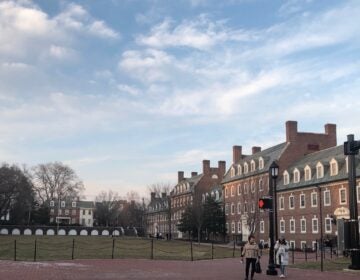New Delaware flight program aims to lessen pilot shortage, reduce costs
Airlines need 800,000 new pilots in the next 20 years, but flight schools and air time are expensive. A new aviation program hopes to change that.
Listen 4:56
Nathan Stone, 18, is a student at FlyGATEWAY at the New Castle Airport in Delaware. The accelerated flight program wants to offer scholarships to make the pilot career more accessible. (Zoë Read/WHYY)
Nathan Stone has wanted to be a pilot since he was a kid. When he was about 14, he went to a pilots camp.
“Going on that runway and seeing 2,000 feet of pavement that takes me up to the sky was the key to unlock that door to aviation for me,” Stone said.
Now, he’s a student at a new aviation institute at the New Castle Airport in Delaware called FlyGATEWAY.
“It’s an amazing feeling — it’s hard to describe — it’s something you always chase after,” said Stone, who at 18 is the youngest student in the program. “Every time I fly, I love that feeling, looking down that runway and knowing that’s what I’m going to be doing for the rest of my life.”
The accelerated flight program, which already has locations in Allentown and Blue Bell, Pennsylvania, in partnership with Liberty University, now has nonprofit status. With that, FlyGATEWAY says, in the near future it can offer full scholarships for students who can’t typically afford traditional flight school. The flight program also wants to train veterans who will be funded by the Veterans Administration.
Founder Regis de Ramel said FlyGATEWAY is trying to help meet an international pilot shortage by making the industry far more accessible to everyone.
“In the past, pilots typically were funded by mom and dad. It’s an expensive enterprise. You have to pay $150 an hour to rent an airplane, you have to crew 250 hours to be hired as an instructor, and then you have to get to 1,500 hours to be hired by an airline,” de Ramel said.
“That’s why we started the nonprofit. It’s not feasible for a lot of low-income kids to get into the space, but the space is really lucrative. And I think kids should consider an alternative to a four-year college that will leave them in debt from $100,000 to $400,000.”
When paid out of pocket, the tuition at FlyGATEWAY is $55,000 to complete the entire program. That typically takes about two years.
It’s much cheaper than traditional four-year aviation schools, which can cost $200,000 after paying for tuition and flight time. Student loans often only cover regular classes, not flight time.
Stone pays his tuition with his salary as a lineman, unloading baggage from airplanes. He said he couldn’t afford a traditional program without taking out loans — which means he wouldn’t be able to fly as frequently because he’d have to save his money.
Another benefit of the program is that students can get into the industry much faster, because they usually can achieve the required hours within two years.
International pilot shortage
Thousands of pilots are nearing the mandatory retirement age of 65. Boeing projects that over the next 20 years there will be a demand for more than 800,000 new pilots worldwide.

Due to the demand, many regional airlines are hiring candidates who chose accelerated flight programs over four-year degree programs.
And starting salaries for pilots at regional airlines has increased to about $60,000 in recent years because of the pilot shortage. By the end of a pilot’s career, salaries can be around $300,000 for a major carrier like American Airlines.
Lyle Hogg is president and CEO of Piedmont Airlines, one of American Airlines’ regional carriers. He said the industry has faced many challenges, starting with 9/11.
“It became not a great industry to want to get into. There were airlines furloughing pilots, laying off pilots, there were pay reductions. Around the same time, the cost to learn how to fly was growing exponentially,” Hogg said. “You put those two together, and the amount of young aviators getting into the business dried up. Then when we began to see a tremendous amount of retirements; there were less people learning to fly.”
The pilot shortage pushed the carrier Republic Airways into bankruptcy, said spokeswoman Lauren Gaudion.
“We had to reorganize fleets, renegotiate contracts with codeshares, because we were impacted by that pilot shortage,” Gaudion said.
So the airline started its own accelerated flight program to get more pilots in the door. Gaudion said it has 250 students so far. She said the airline understands not everyone wants to go to a four-year university.
Michael Hales, who directs the four-year aviation program at Delaware State University in Dover, said with all the colleges and training programs combined, it’s still not enough to fill the pilot void.
“Let’s take Delta. As their pilots retire, the first officers move across to the left seat. Now, there’s a shortage of first officers. So Delta says, ‘Hey, regionals we’re hiring.’ So, those who want to move from the minor leagues to the big leagues take those vacated first officer positions,” he said.
“Now, you have a shortage of captains at the regionals. So, their first officers move to the left seat to fill that vacancy. So, now you have a shortage of first officers at the regionals. And they’re not being produced fast enough to fill that void.”
Hales said Delaware State is working to keep costs lower than other colleges, which attracts more students.
Separate from regular tuition, the flight fees at Del State are about $58,312, but that can be covered by student loans — something that is rather distinctive to the university, Hales said.
The aviation school has 91 students in its pilot program — up from 62 three years ago.
But more needs to be done, Hales said.
“There’s got to be a way to mitigate the costs. Because aviation costs are what is a discriminator, if you will. I try to educate our students and their families. If you wanted your kid to go to medical school to be a doctor or a lawyer, you wouldn’t blink an eye if I told you it’s going to cost $100,000 over four years, you’d be like, ‘Of course, that’s med school, they’re going to become a doctor.’ But there’s always a shock when you say for aviation the costs are similar,” he said. “They say, ‘We can’t afford that, so you have to choose another degree.’ That’s an education issue right there.”
He would like the industry to get more involved in cutting the costs, such as airlines offering a loan repayment program.
While many airlines now accept applicants from pilots who went to accelerated flight programs, some major airlines still require bachelor’s degrees, Hales said.
Both Hogg of Piedmont Airlines and Gaudion of Republic Airways said that when FlyGATEWAY in New Castle offers scholarships, it will benefit the industry.
“I think the school in Delaware is a great example of people coming together to solve a problem, to say we want to expand this opportunity to the people who are passionate about it, not just those who can afford it,” Gaudion said.
WHYY is your source for fact-based, in-depth journalism and information. As a nonprofit organization, we rely on financial support from readers like you. Please give today.





